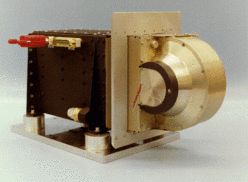
The Cluster spacecraft spin once every 4 seconds in a plane approximately parallel to the ecliptic plane. The PEACE instrument measure an instantaneous 2D slice of the plasma local to the spacecraft. A 3D picture of the electron distribution is built up by combining all the 2D slices from a single spin of the spacecraft.
- Locations of PEACE sensors
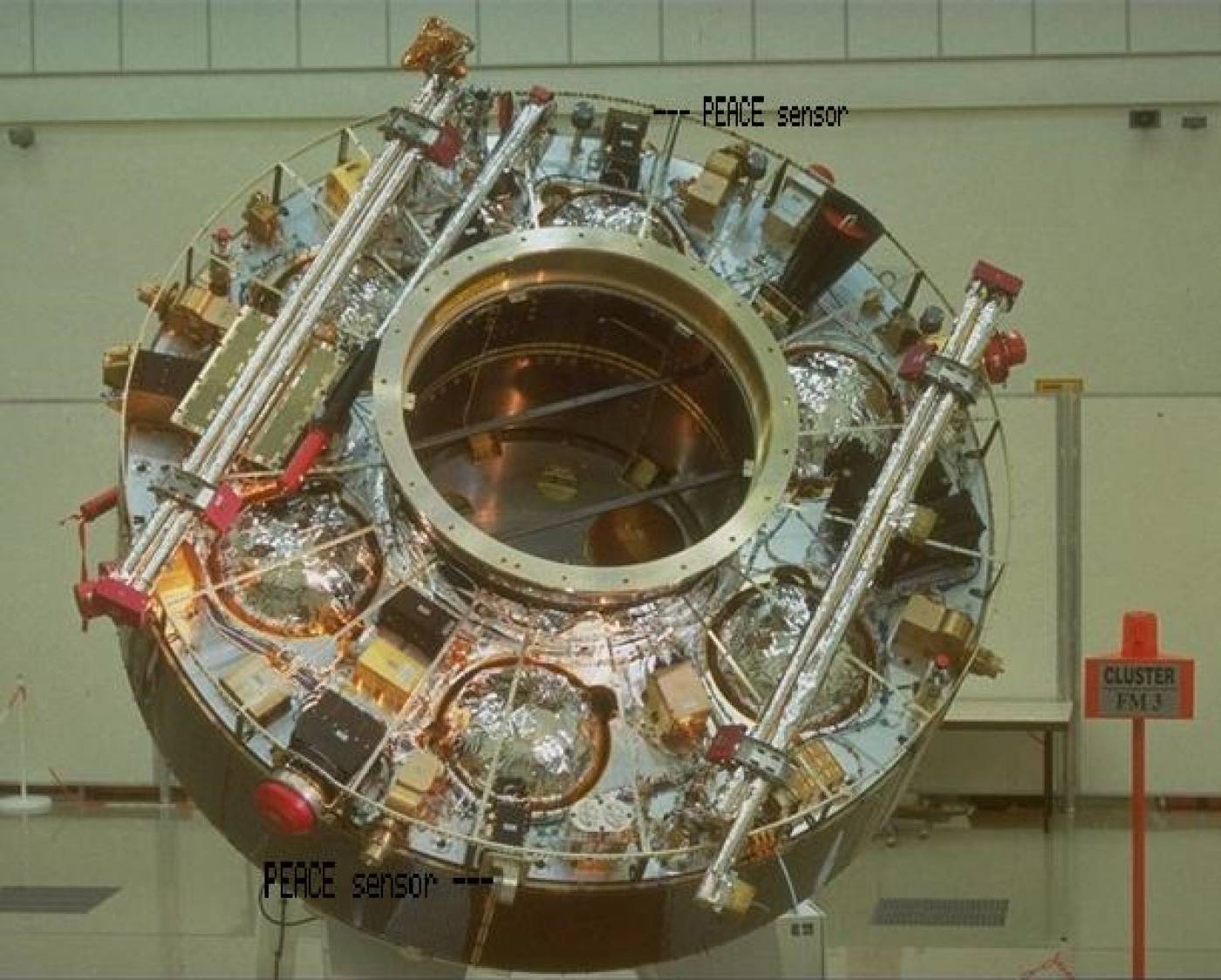
Photo of one of the Cluster spacecraft showing the location of the PEACE sensors. Image courtesy ESA
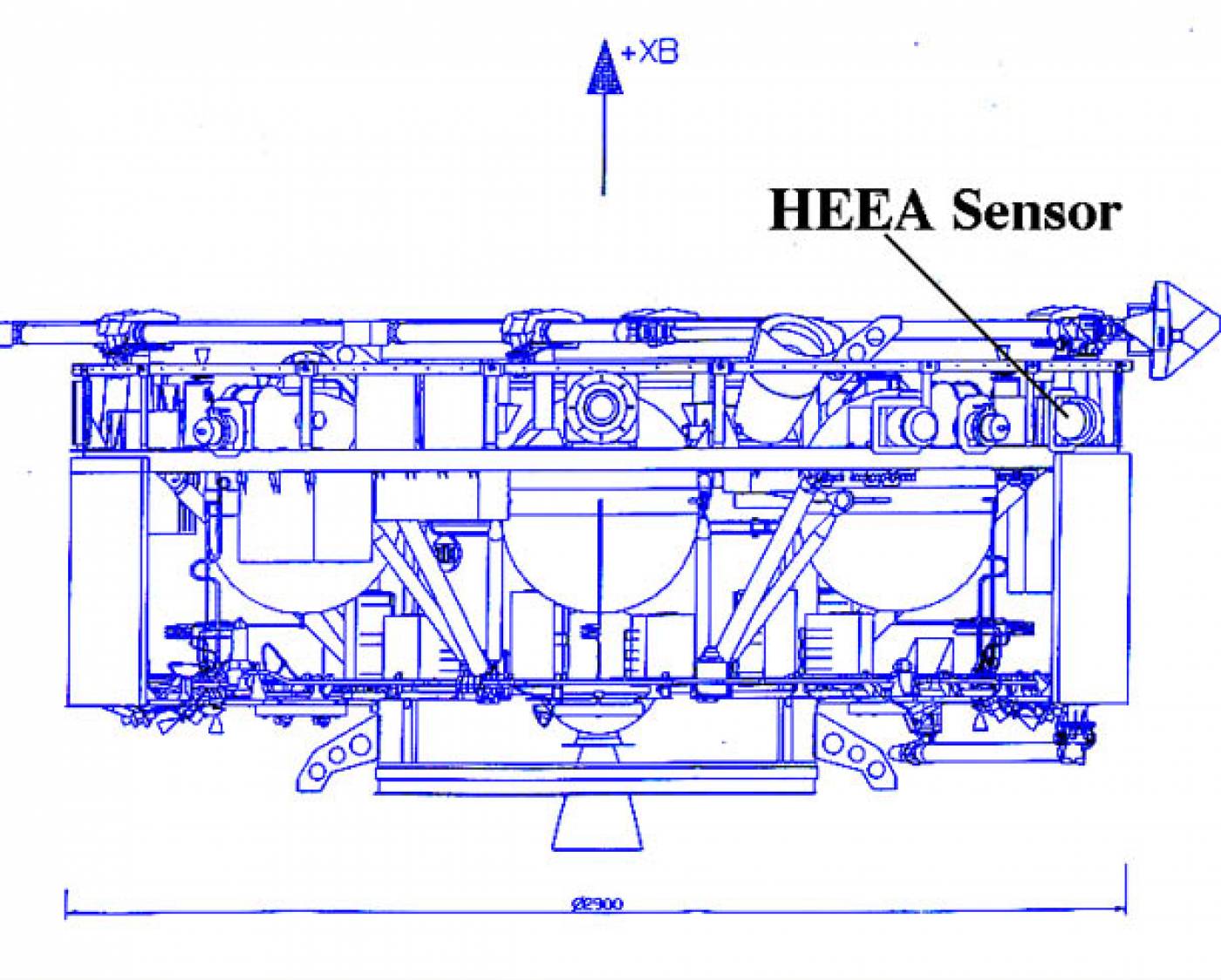
Side-on layout of the instruments on the Cluster spacecraft. Note that the HEEA and LEEA locations are reversed compared to original planning. Based on ESA blueprints. (c) UCL
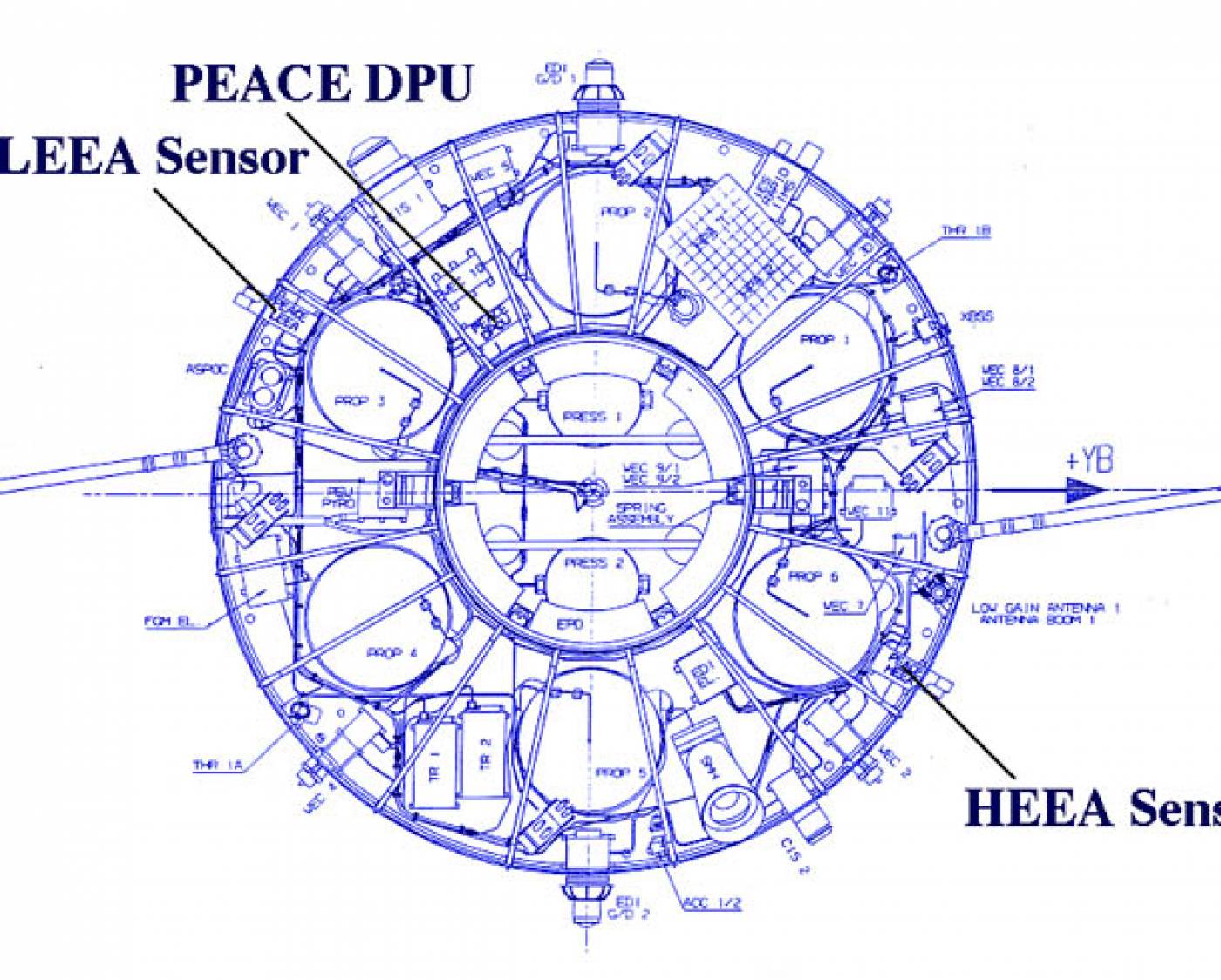
Top-down layout of the instruments on the Cluster spacecraft. Note that the HEEA and LEEA locations are reversed compared to original planning. Based on ESA blueprints. (c) UCL
- Images of PEACE
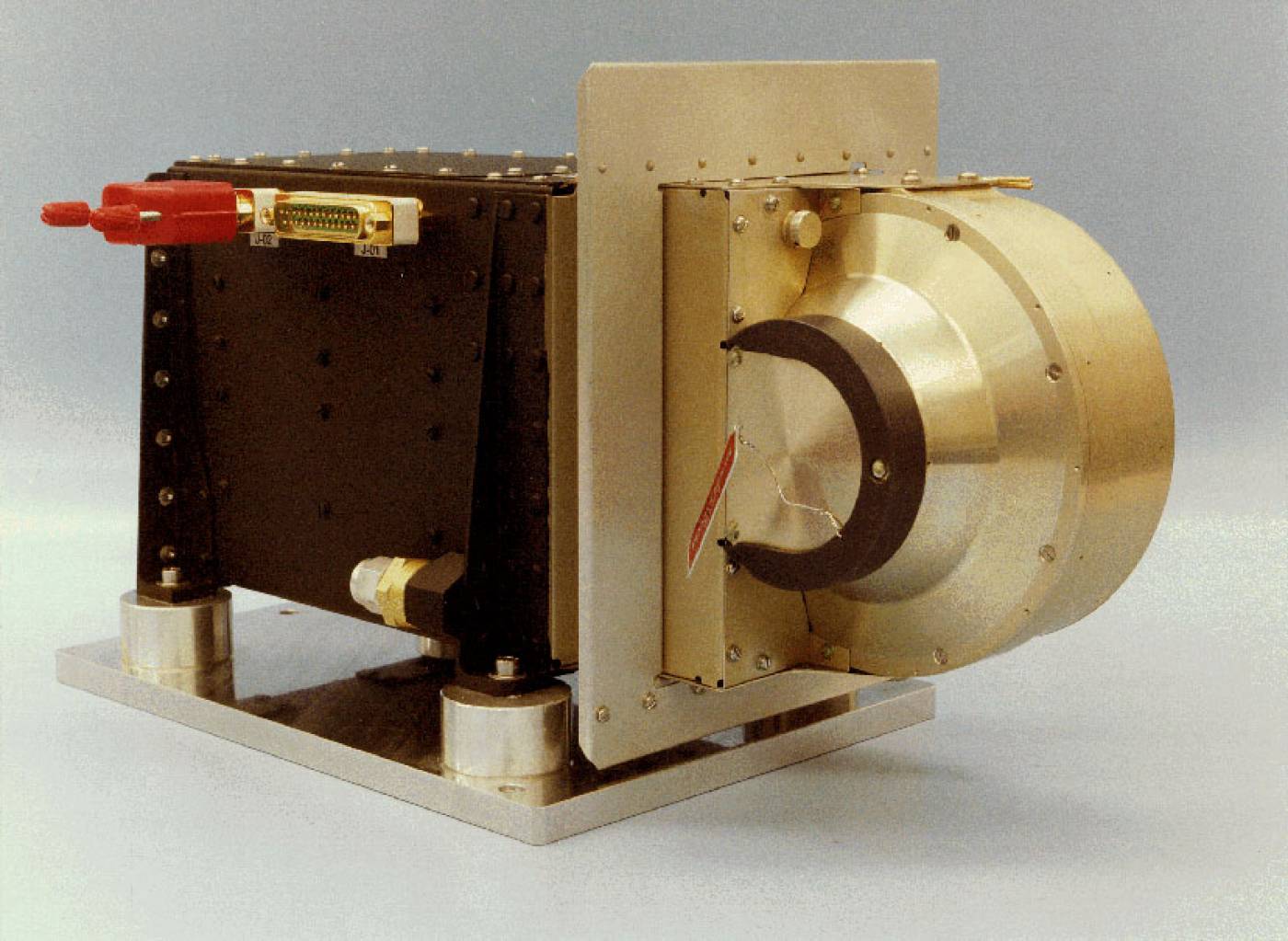
Head of a PEACE LEEA sensor. (c) MSSL
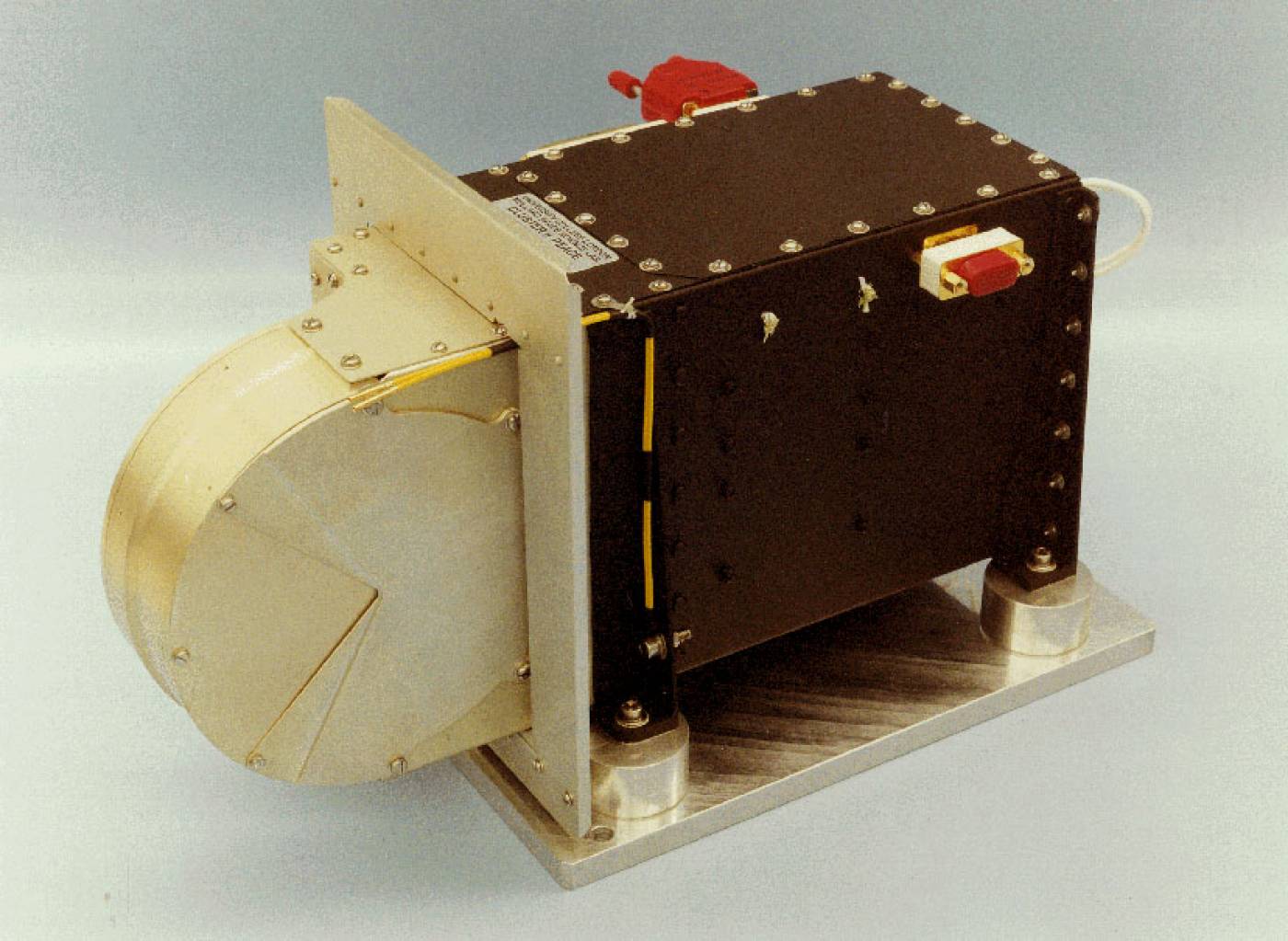
Head of a PEACE LEEA sensor showing no correlator connector. (c) MSSL
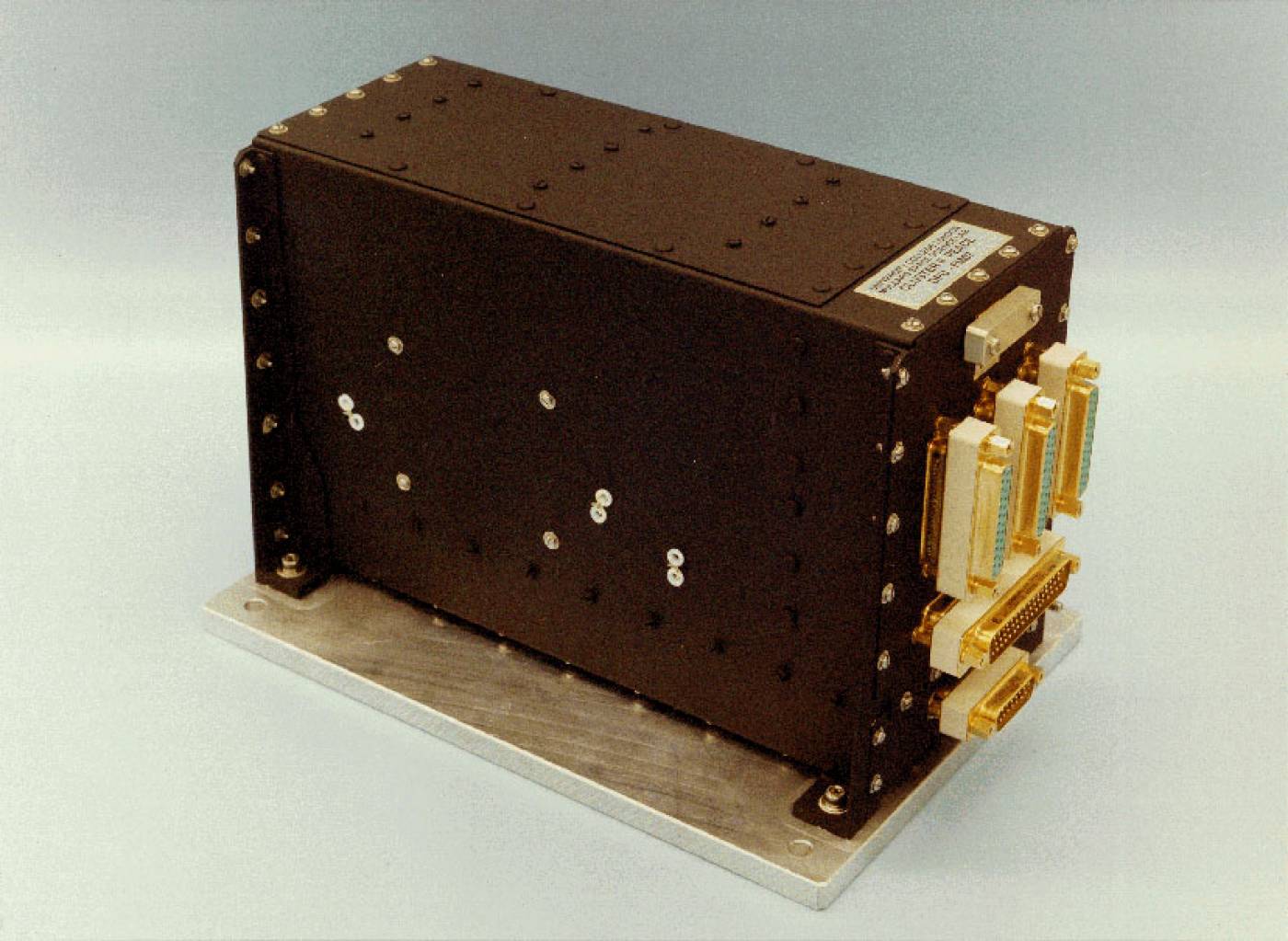
Data Processing Unit for PEACE. (c) MSSL
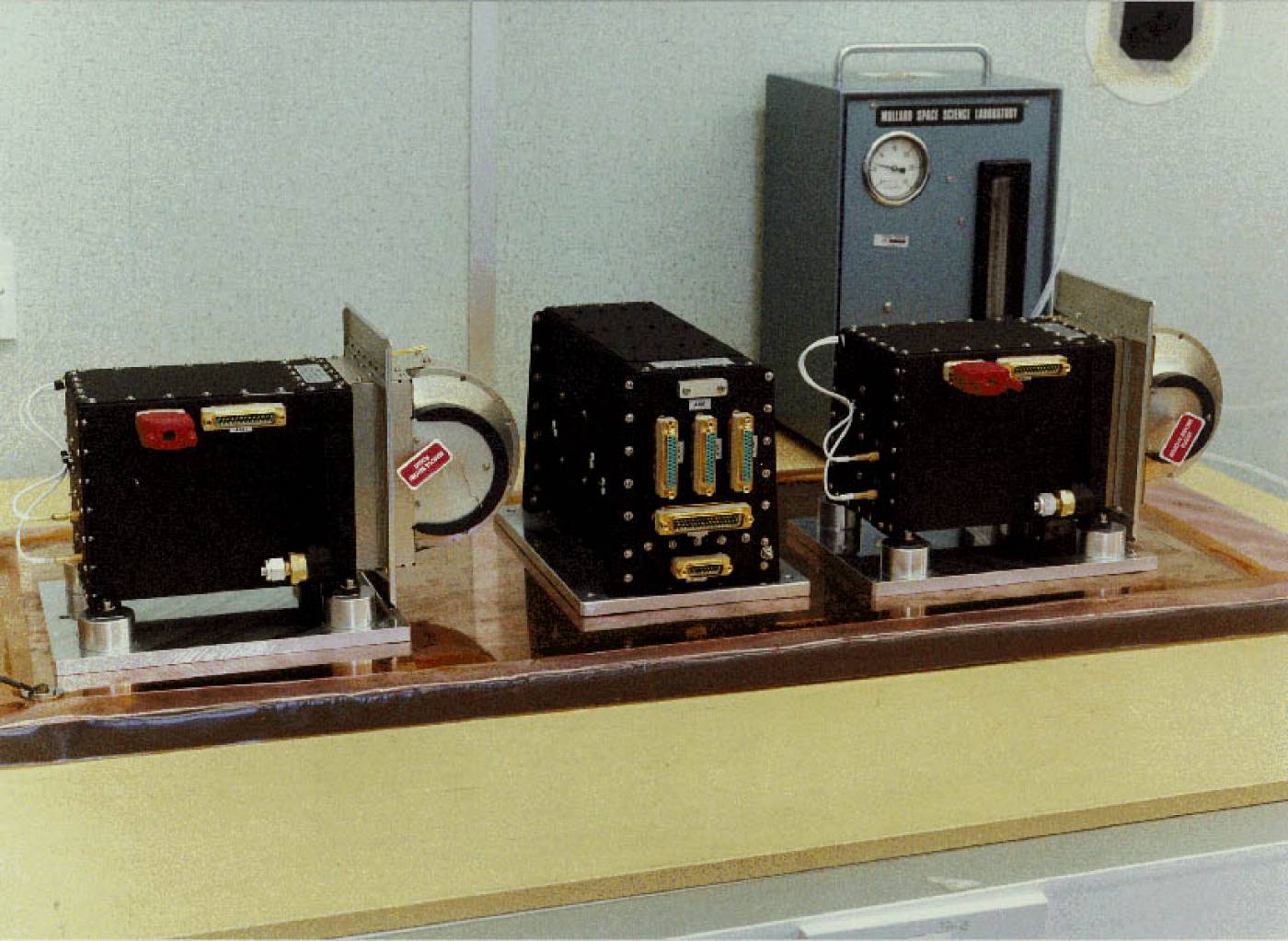
The PEACE FM07 (Cluster 3, Samba) instrument in the MSSL Clean Room. (c) MSSL
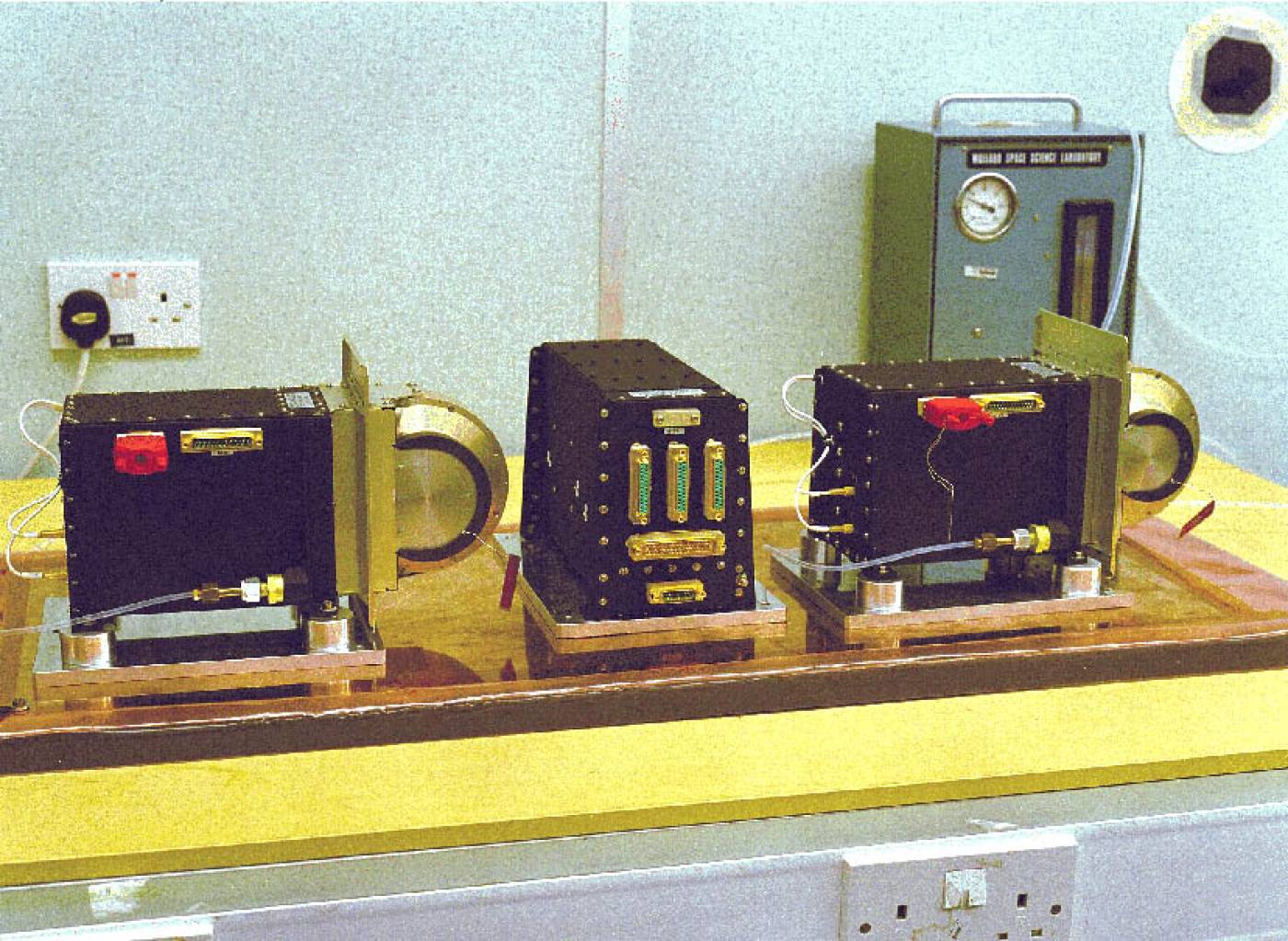
The PEACE FM06 (Cluster 2, Salsa) instrument in the MSSL Clean Room. (c) MSSL
Each PEACE instrument has two sensor heads, LEEA (low energy electron analyser) and HEEA (high energy electron analyser). These sensors are mounted on opposite sides of each spacecraft such that the instantaneous field of view of one is the same as that seen by the other half a spacecraft rotation period later. LEEA and HEEA differ only in geometric factor (HEEA admits more electrons than LEEA in an identical plasma).
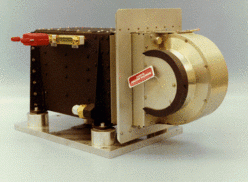
The full PEACE energy range is divided into 88 levels. Each sensor is typically set up to sample an energy range of 60 contiguous levels. Both LEEA and HEEA can be used to sample any group of 60 or 30 levels within the full range of 88 levels. Although neither sensor can cover the full energy range, full coverage of the energy range can be achieved by using both together. HEEA will normally cover the upper part of the energy range, since its larger geometric factor enables it to make better measurements of the more diffuse electron population expected at higher energies. When the energy ranges of the two sensors overlap, an appropriate combination of data from the two sensors produces data with an effective 4*pi steradian coverage in the overlap region, every half spin.
Each PEACE instrument makes an onboard calculation of moments (for a restricted energy range) and a spacecraft potential estimate, once every spin.
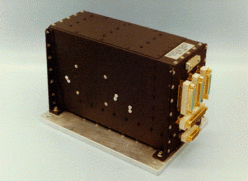
When Normal Mode telemetry is available, the Moments data and Spacecraft Potential estimate are transmitted to ground, together with Pitch Angle Distributions and a Low Energy Distribution. When Burst Mode Telemetry is available, PEACE can also transmit selected 3-dimensional velocity distribution data.
More information about the PEACE instruments can be found in the instrument paper from the original Cluster launch, the PEACE data papers from the Cluster Active Archive, or in the instrumentation chapters of Dr. Rob Fear and Dr. Andrew Walsh's Ph. D theses.
 Close
Close

